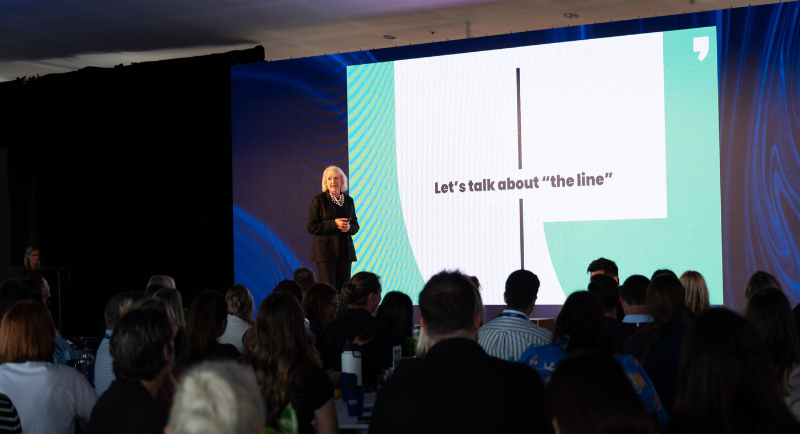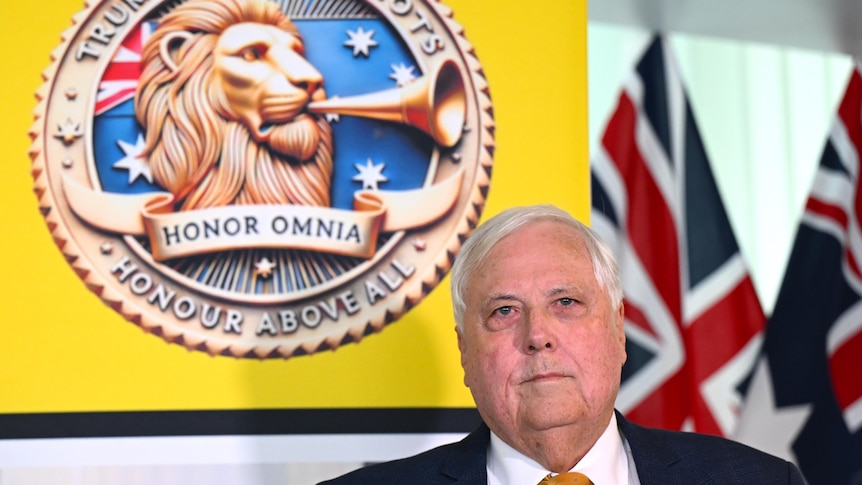Last year, there were 4,100 complaints to industry watchdog Ad Standards – a 60% rise from 2022 – but the reason why may be more complex than ever.
Speaking at AANA RESET, Gillian Franklin, Chair of Ad Standards offered a data-driven, candid look at how Australian audiences respond to advertising content, what they’re complaining about, and why it matters more than ever for brands to understand where the ‘line’ is drawn.
The big headline? Clive Palmer’s Trumpet of Patriots campaigns for the Federal Election have attracted more than 1,000 complaints in just a few weeks.
Complainants have mostly cited concerns about gender, racial discrimination as well as truth and accuracy.

OOH ads for Trumpet of Patriots.
Currently, political advertising isn’t currently covered under the Ad Standards remit, but according to Franklin, the volume of complaints reveals deeper truths about public sentiment.
“We’re not able to take action in this case, but we do use these insights from complaints, regardless of the category, because they help inform and strengthen our self-regulatory system and are important indicators of broader consumer sentiment,” she said.
What is the line?
Ad Standards positions itself not as a roadblock to creativity but as a guidepost to keep brands in step with evolving community expectations, but when Franklin talks about ‘crossing the line’ what does she mean?
“What is the line?” said Franklin. “We have our finger on the pulse. We understand community sentiment, and we monitor this line. We work side-by-side with AANA to promote a responsible self-regulatory system, and it’s a world-leading self-regulatory system.”
The insights aren’t just theoretical, they’re backed by a rigorous collection of community data and real-time public feedback.
“Consider that last year, we received over 4100 complaints in the year, up 10% from the prior year, and up 60% from 2022. Now we don’t think of these complaints as noise. We think these are signals.”

Gillian Franklin at AANA Reset.
Toyota’s ‘bugger’ ad
With about 80 complaints a week, what crossed the line in 2024? According to the complaints, the top concern is sex, nudity and sexual imagery, followed by increased discomfort around gambling, deceptive advertising, and the protection of children from inappropriate content.
Notably absent from the list? Food and beverage advertising, despite intense political and media scrutiny. “Only 17% of the population started concerns about food and bev, so it came in at 13.”
Franklin noted that that it’s clear standards change, as do sensitivities. In the late 1990s, Toyota’s “bugger” ad was one of the most complained-about commercials. Today, re-released, it barely raises an eyebrow.
“75% of adults believe it’s an acceptable term,” said Franklin.
Boundary-pushing content
The ‘line’ is also affected by context.
Franklin said, “Our research also tells us that where the line sits depends on the environment in which it exists. To be clear, messages of deliberate offensiveness are flat out beyond the pale regardless of circumstance.
“But deeper factors, like a message tone and the intention behind it can render the same term either acceptable or unacceptable.
“It also comes down to the channel in which the message exists. So, while standards for broad reach channels like free-to-air television and OOH have remained consistent, there is a much greater acceptance of boundary-pushing content when it appears in more targeted channels.”
Audience and platform also play a major role in public reaction. “There is a much greater acceptance of boundary pushing content when it appears in more targeted channels,” Franklin said. “So for Australians a definition of where the line is depends on how much control they have over whether they see that advertising or not.”
“It’s vital, then that advertisers consider not just the message, but also the medium in which it is delivered.”
The line isn’t static
And as Franklin says ultimately, advertising doesn’t just reflect how brands see themselves, it reflects how Australians see their own society.
“What people do or say in their actual life isn’t always what they want to see reflected back at them,” she said. “The line isn’t static. It’s dynamic. It shoots, it moves, it’s variable. As we’ve seen so far, where the line sits and where the brand crosses it or not, comes down to the where, the who and the how. It’s about placement, where the message is encountered and how much control the viewer has.
“It’s about where the children are exposed to the message and whether the content is deemed appropriate or not. And it’s about the tone. If something is clever and self aware, Australians are more generous about where the line is.”
